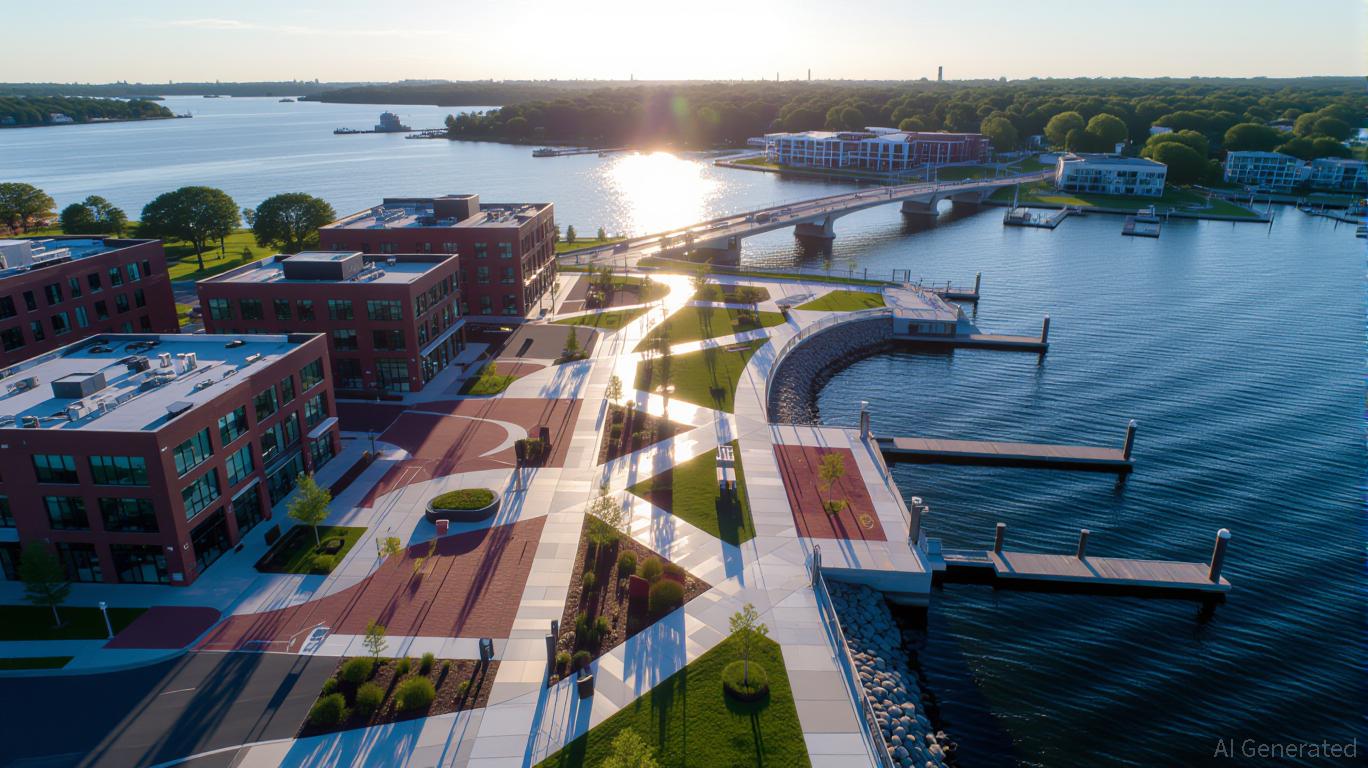Public-Private Collaborations Driving Real Estate and Industrial Expansion in Webster, NY
- Webster , NY, leverages PPPs via FAST NY and NY Forward grants to boost infrastructure, real estate , and industrial investment. - Xerox campus upgrades and downtown revitalization projects enhance connectivity, attracting advanced manufacturing and logistics sectors. - $650M fairlife® facility creates 250 jobs, demonstrating how modernized infrastructure attracts high-value industries to secondary markets. - Websters model shows PPPs can drive sustainable growth by aligning public funding with private-s
Webster, NY: A Leading Example of Public-Private Partnerships Driving Regional Growth
In recent years, Webster, New York has set a benchmark for how public-private partnerships (PPPs) can accelerate infrastructure improvements, boost property values, and attract industrial investment. Through coordinated efforts between local government and private entities, Webster has rapidly evolved into a thriving center for advanced manufacturing, logistics, and commercial activity. This overview explores how targeted infrastructure projects—supported by programs such as the FAST NY grant and NY Forward—have fueled economic expansion and established Webster as a promising destination for long-term investment.

Strategic Infrastructure: Laying the Groundwork for Progress
Webster’s transformation has been powered by two major PPP initiatives: a $9.8 million FAST NY grant dedicated to the Xerox Wilson Campus, and a $4.5 million NY Forward Program grant focused on revitalizing the downtown area. The FAST NY grant, managed by the Webster Economic Development Alliance (WEDA), is revitalizing a 300-acre former industrial site with new roads, expanded sewer capacity, and upgraded electrical infrastructure. These enhancements are crucial for attracting sectors like advanced manufacturing, food production, and renewable energy.
Meanwhile, the NY Forward Program has supported projects that improve walkability, sustainability, and community involvement in the Village of Webster. Notable efforts include upgrades to Veterans Memorial Park, renovations at Harmony House, and the installation of new wayfinding signage to make downtown more accessible. These projects are designed to energize the commercial district, foster local business growth, and draw in new enterprises.
Rising Real Estate Values: The Impact of Modernization
The benefits of these infrastructure upgrades are reflected in Webster’s real estate market. The redevelopment of the Xerox campus alone is expected to deliver over one million square feet of industrial space by 2025, appealing to companies seeking affordable labor and strategic locations. Webster and similar secondary markets have outpaced larger cities in growth, thanks to their cost advantages, skilled workforce, and effective public-private collaboration.
According to WEDA, the Sandbar Waterfront Revitalization Project—a multi-phase PPP effort—has already led to increased property values along the waterfront. By focusing on shoreline protection, recreational amenities, and educational enhancements, the project is set to further stimulate both residential and commercial development. Additionally, the demolition and planned redevelopment of the 600 Ridge Road site, supported by a $90,000 transportation planning grant, highlights Webster’s commitment to improving connectivity and pedestrian access.
Attracting Industry: Building a Hub for High-Value Sectors
Webster’s readiness in infrastructure has been a magnet for industrial investment. A prime example is the $650 million fairlife® production facility, a private investment made possible in part by the upgraded Xerox campus. This facility is expected to generate 250 well-paying jobs by 2025, with the site’s modern utilities and proximity to workforce centers playing a key role in securing the project.
The area’s emphasis on advanced manufacturing and logistics has also attracted interest from industries such as semiconductors and renewable energy. The improved electrical and transportation infrastructure at the Xerox campus provides the scalability needed for high-demand sectors. Industry experts note that Webster’s location near major transport routes, combined with its PPP-driven site preparation, makes it a compelling alternative to more expensive urban markets.
Conclusion: A Model for Sustainable Economic Development
Webster’s achievements highlight the powerful role of PPPs in driving both real estate and industrial growth. By aligning public investment with private sector needs, the community has built a robust infrastructure foundation that supports immediate economic activity and future expansion. For investors, Webster stands out as a prime example of how strategic infrastructure planning can unlock value across commercial, industrial, and residential sectors. As national initiatives like the IIJA continue to emphasize sustainability and site readiness, Webster’s approach may serve as a blueprint for other regions aiming to balance economic progress with public responsibility.
Disclaimer: The content of this article solely reflects the author's opinion and does not represent the platform in any capacity. This article is not intended to serve as a reference for making investment decisions.
You may also like
Ethereum News Update: ZKP’s Hardware-Centric Strategy Shakes Up Speculation-Fueled Crypto Presales
- ZKP launches with $17M pre-built Proof Pods, offering instant AI compute rewards via Wi-Fi-connected hardware. - Unlike speculative presales, ZKP's hardware-first model ensures operational readiness and decentralized network resilience. - Competitors like Blazpay and SpacePay focus on utility-driven crypto adoption, but ZKP's tiered, upgradable devices emphasize verifiable performance. - Ethereum's gas limit increase aligns with ZKP's distributed compute approach, addressing scalability challenges throug

Solana News Update: Investors Shift Toward XRP ETFs, Bringing Solana's 21-Day Inflow Streak to a Close
- Solana ETFs ended a 21-day inflow streak with a $8.1M net outflow on Nov 27, 2025, led by 21Shares TSOL's $34.37M redemptions. - This reversal contrasted with Bitcoin/Ethereum ETFs' $5.43B outflows and highlighted Solana's 7% staking yields and 70M daily transactions. - Analysts linked the shift to profit-taking, macroeconomic pressures, and investor rotation toward XRP ETFs with perfect inflow records. - Despite the outflow, Solana ETFs still hold $964M in assets, but face challenges as TVL dropped 32%

XRP News Today: Institutional ETFs Drive XRP to Compete with Bitcoin's Market Leadership
- XRP ETFs see $160M+ inflows as institutional demand surges, with Bitwise and Franklin Templeton leading the charge. - NYSE approves Grayscale and Franklin XRP/Dogecoin ETFs amid SEC easing altcoin fund approvals, signaling crypto normalization. - Altcoin Season Index at 25/100 shows Bitcoin dominance, but projects like Aster and Zcash outperform BTC by 1,000%+. - XRP rebounds to $2.06 with 48% volume spike, but 79M tokens absorbed by ETFs raise supply concerns. - Institutional-grade custody solutions fro

The Influence of City Infrastructure Funding on Business Property and Economic Growth: Evaluating the $9.8 Million FAST NY Grant Awarded to Webster, NY as a M
- Webster , NY allocated a $9.8M FAST NY Grant to redevelop a 300-acre brownfield into a high-tech industrial hub, boosting land value appreciation. - Infrastructure upgrades including roads and sewer systems created shovel-ready sites, attracting manufacturers and aligning with Governor Hochul's economic strategy. - The project spurred 10.1% residential property value growth and 250 new jobs, though 2023 saw a 2.32% employment dip amid sector transitions. - Strategic proximity to I-390 and Rochester Airpo
